What's New
Displaying results 2771 - 2780 of 4052
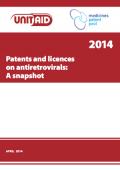
Resource | Reviews and Snapshots,
The report provides an overview of the patent landscape with respect to a select number of antiretroviral (ARV) medicines in developing countries as of April 2014. The focus is primarily on those ARVs that are recommended by the World Health Organization (WHO) as well as new ARVs that have either recently obtained regulatory approval or are in phase III clinical trials.
Part 1 provides a brief introduction to patents and licences and their effect on the market for ARVs. It introduces key concepts that will facilitate an understanding of the report. It also explains which data sources were used for the report and notes a number of disclaimers with regard to the information contained in the report.
Part 2 is the core of the report. It outlines the patent status and licensing status of each ARV in the 81 developing countries for which data are available. For each ARV the report indicates whether that ARV is included in fixed-dose combinations for which there may be patents. General conclusions are drawn in light of the data. The key purpose is to provide an overview of the patent landscape for each ARV and, in particular, to show in which countries market competition for a given ARV is possible in view of existing patents and licences.
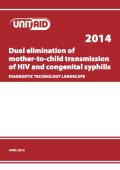
Resource | Publications,
In the case of mother-to-child transmission (MTCT) of both HIV and syphilis, testing pregnant women is a critical intervention for prevention, care and treatment of both mother and child. There are a number of combined HIV/ syphilis (treponemal) tests emerging that could be effective tools in the dual elimination of MTCT of HIV and syphilis. This document reviews the current testing landscape for such diagnostic tools.
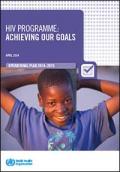
Resource | Publications,
The 2014–2015 biennium is critical in the fight against HIV: It is the culmination of a major global effort to achieve the health-related Millennium Development Goals (MDGs) and other global HIV goals and targets by 2015. Significant opportunities exist to build on progress to date and bring the world closer to its ultimate goal of ending the HIV pandemic.
The past decade produced some remarkable achievements. By the end of 2012, nearly 10 million people were receiving antiretroviral therapy (ART) in low- and middle-income countries. Universal access for all people in most urgent need of ART has been achieved in many countries, and the global target of ART for 15 million people by 2015 is within reach.
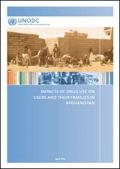
Resource | Publications,
Afghanistan is the world’s largest producer and cultivator of opium poppies; it produces almost three quarters of the world’s illicit opium. While a significant amount of the opium produced in Afghanistan is trafficked out of the country, in 2009 it was estimated that almost 10 per cent of Afghans aged between 15 and 64 were drug users.
Based on interviews with drug users, the family members of drug users, key informants and Government
officials, this study aims to provide an insight into the origins, evolution and impact of drug use on users and their families across Afghanistan. While the study is not nationally representative, it seeks to enhance understanding of drug use in Afghanistan and provide information to help strengthen prevention and treatment policies. All the drug users interviewed during the study were "problem drug users", who used drugs such as opium, heroin, hashish and tranquillizers (for non-medical use) daily or several times a week. Although the use of amphetamine-type stimulants (ATS) is rising in Afghanistan, the number of ATS users remains small and that group was not interviewed for the present research study.

Resource | Reviews and Snapshots,
Pakistan has followed the epidemic pattern typically seen elsewhere in Asia, i.e., shifting from low HIV prevalence to high prevalence concentrated among certain key populations at higher risk. The first indigenous HV case was detected in 1987, more cases started being reported in the 1990s (mostly among returning work migrants and their families), and then suddenly in 2003 high levels of HIV were detected among people who inject drugs in Karachi (23%) and Larkana (9.7%) in Sindh.

Resource | Presentations,
2007, research study by TUC for accessing the feasibility of methodology for hidden population in Bangkok and Chiang rai.
2011, transferred to MOPH for strengthening the surveillance system among hidden population in 3 tourist provinces (Chiang mai, Chonburi and Phuket).
2013, MOPH expanded to Bangkok, Nakorn-rachasrima, and Rachburi.
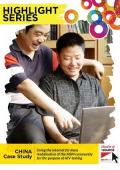
Resource | Publications,
APCOM’s Highlight series profile the often unheard of MSM and transgender community- based documentation of good practices from projects across Asia and the Pacific.
APCOM works with individuals and organisations on the Highlight series to form the evidence- based information to be shared across the region and for advocacy on issues that affect the lives of MSM and transgender people, including HIV, rights, health and well being.
This case study focus on using the internet for mass mobilisation of the MSM community for the purpose of HIV testing.
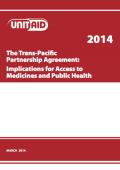
Resource | Publications,
The objective of this report is to provide an analysis of the provisions in the proposed TPPA in order to obtain a clearer understanding of their implications. It is hoped that the report will also be a useful resource for other stakeholders in the public health field.
The report analyses the key negotiating issues in the USA’s proposals (widely considered to be the basic negotiation text for the TPPA) which are likely to have an impact on access to medicines and public health.
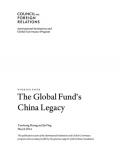
Resource | Publications,
Over the past decade, the Global Fund's presence in China has left behind a deeply mixed legacy. Although the Fund's money has made important contributions to China's fight against AIDS, TB, and malaria, as well as its domestic health governance in ideational, institutional, and policy domains, it is associated with uneven progress in grant performance, low value for money, unintended effects on civil society–building, and enduring challenges to scaling-up and sustainability.
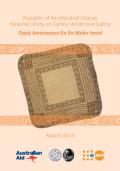
Resource | Publications,
Violence against women (VAW) is a global problem that crosses cultural, geographic, religious, social, and economic boundaries and is a violation of human rights. Violence against women deprives women of their right to take part fully in social and economic life. It causes a myriad of physical and mental health issues and in some cases results in loss of life. A lack of understanding of the magnitude of VAW, its causes and consequences, and the trends and patterns across cultures and countries, including those in the Pacific, hinders the development of efforts to address it.
VAW is a widely known but rarely discussed issue. In the RMI, as in many countries, it is seen as a family problem. There is a need to combine quantitative and qualitative data on the subject not only to inform policy but also to recognize the human rights of women and their families and give voice to those who are largely unheard.





